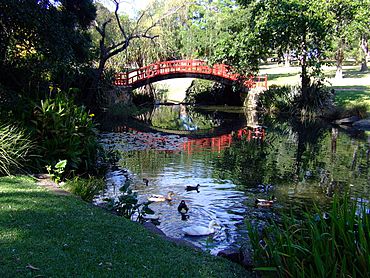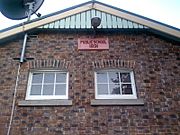Keiraville, New South Wales facts for kids
Quick facts for kids KeiravilleWollongong, New South Wales |
|||||||||||||||
|---|---|---|---|---|---|---|---|---|---|---|---|---|---|---|---|

Wollongong Botanic Garden
|
|||||||||||||||
| Population | 3,070 (2016 census) | ||||||||||||||
| • Density | 930/km2 (2,400/sq mi) | ||||||||||||||
| Postcode(s) | 2500 | ||||||||||||||
| Elevation | 40 m (131 ft) | ||||||||||||||
| Area | 3.3 km2 (1.3 sq mi) | ||||||||||||||
| Location |
|
||||||||||||||
| LGA(s) | City of Wollongong | ||||||||||||||
| State electorate(s) | Keira | ||||||||||||||
| Federal Division(s) | Cunningham | ||||||||||||||
|
|||||||||||||||
Keiraville is an inner suburb of the city of Wollongong, New South Wales, Australia in the Illawarra region. It is situated in the foothills of Mount Keira, approximately three kilometres northwest of Wollongong.
Description
Keiraville has a public school (the Keiraville Public School), post office and several shops located on Gipps Road.
Keiraville (and its neighbour Gwynneville) is known as a university town, home to the main campus of the University of Wollongong.
Another major landmark, Wollongong Botanic Garden, is situated between Northfields Avenue and Murphys Avenue, and includes the Wollongong Conservatorium of Music.
Keiraville Public School
The local Keiraville Public School was established in 1891 for the local farmers, miners and their families of the area (particularly of Port Kembla and other coal mining areas).
The grounds consist of two field and a series of demountables and fixed buildings.
Heritage listings
Keiraville has a number of heritage-listed sites, including:
- Murphys Avenue: Gleniffer Brae
Population
In the 2022 Census, there were 4,002 people in Keiraville. 66.9% of people were born in Australia. The next most common countries of birth were China 9.1%, and England 3.0%. 71.1% of people spoke only English at home. Other languages spoken at home included Mandarin at 9.1%. The most common responses for religion were No Religion 36.8%, Catholic 18.8% and Anglican 13.2%.



